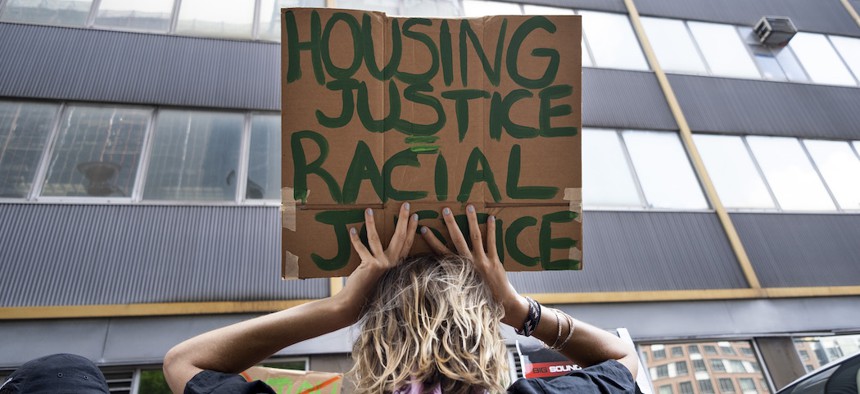There’s a common expression in the Black American community: “When America catches a cold, Black America catches pneumonia.” This expression highlights the reality that for many Black Americans, our livelihoods are in a consistently precarious state, balanced within such a thin margin for error that any additional weight or hardship will likely be catastrophic. Indeed, we have seen this expression play out in its most literal form across the United States as COVID-19 continues to devastate Black communities physically and economically.
As New York City begins Phase 3 of reopening, it should do so carefully and through a race-equity lens, taking steps to ensure that Black communities do not continue to suffer disproportionate harm. One area in which the government could begin to address race inequity is in housing court, where statistics show the majority of tenants facing eviction are Black and Latino. To protect Black lives, the government must keep the courts closed and extend the eviction moratorium for all tenants until the risk of contracting COVID-19 has been alleviated.
Although a recently passed law, the Tenant Safe Harbor Act, takes an important step toward stemming the expected flood of eviction cases by extending the eviction moratorium to anyone who can prove a financial hardship during the pandemic, it doesn’t protect everyone from eviction. Tenants unable to prove a hardship or tenants with other kinds of eviction cases would still be vulnerable, and the law does not protect tenants from lawsuits seeking monetary compensation that could force them back into housing court.
It’s no secret that Black and Latino communities have been disproportionately affected by COVID-19. Thousands of Black and Latino people in New York City have lost their jobs, developed health problems, and faced other financial hardships created by the disease or measures to stem its spread, including shuttered businesses, caring for loved ones, even paying for funeral expenses. Increased federal unemployment benefits, a lifeline for many, are set to expire July 31, further hampering tenants’ ability to pay rent.
Black and Latino communities have also suffered devastating health consequences because of the virus. Recent data from the federal government reveals that Black and Latino communities are three times as likely to become infected with the coronavirus and twice as likely to die from it as white people. While some attribute this disparity to underlying health conditions, health experts have pointed to the way structural racism and discrimination increase stress levels in the human body, leaving people more susceptible to infection. Black and Latino workers are also disproportionately represented among essential workers exposed on the front lines of this crisis, further elevating the risk of infection.
Even before the pandemic began, Black people dealt with worse health outcomes, higher debt burdens, and higher risk of eviction than white people. Reopening housing courts now to allow landlords to bring eviction and money judgement cases against tenants will exacerbate the consequences of systemic racism and injustices that Black communities have faced for centuries.
New York City housing courts have always been crowded, hectic places, where small corridors force close-up interaction from distances much smaller than six feet. To date, the courts have still not shown they can safely accommodate all the people who will be facing cases in the coming weeks or months. It also remains unclear how tenants who are proceeding without lawyers will successfully navigate virtual appearances, especially when low-income tenants often lack resources such as computers and Wi-fi.
In light of the national conversation around the killings of Black people at the hands of police, Chief Judge DiFiore of the New York State Unified Court System recently announced an independent review of issues of institutional racism in the courts. But if the court is truly committed to institutional change, it must do more than review its trainings, hiring practices, and responses to racism and bias in the courts. It must consider the entire landscape of institutional racism in front of it, including how it is that we arrived in this place where the majority of tenants in housing court are Black, but only a small minority of judges are Black. It must consider what steps it can take not only to avoid increasing historical inequities but to improve circumstances for Black communities.
Black people are already suffering from metaphorical pneumonia during this crisis. The government should do everything it can to help Black communities not only recover, but thrive – including keeping courts closed, halting all evictions, and finding solutions that invest in Black communities rather than pushing them out of their homes and into lifelong debt.


